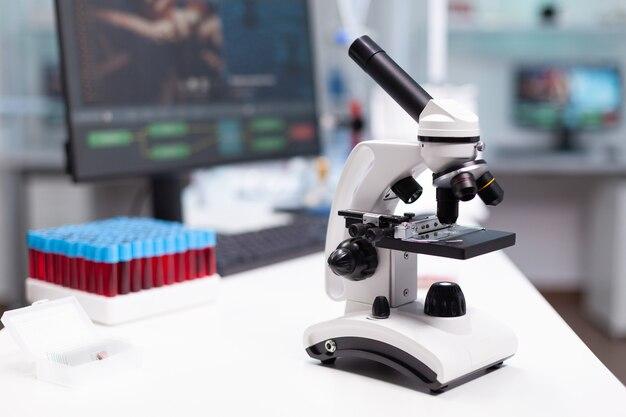Have you ever wondered what makes your baked goods rise and become fluffy? Well, the secret lies in the raising agents used in the recipe. But did you know that there are different types of raising agents? In this blog post, we will explore the difference between chemical raising agents and biological raising agents.
Chemical raising agents, as the name suggests, are made up of chemicals that produce gas when they come into contact with moisture and heat. These chemicals include baking powder and baking soda. On the other hand, biological raising agents use living organisms, such as yeast, to produce gas through fermentation.
In this blog post, we will delve deeper into these two types of raising agents, discussing their properties, uses, and their impact on the final outcome of your baked goods. So, if you’ve ever wondered why your donuts are light and fluffy or how yeast works its magic in bread-making, keep reading!

What distinguishes chemical raising agents from biological raising agents
When it comes to achieving fluffy, rise-to-the-occasion baked goods, the secret lies in the raising agents. But not all raising agents are created equal. In fact, there’s quite a difference between chemical raising agents and their biological counterparts. Let’s dive into the world of baking chemistry and biology to uncover what sets these two apart.
Chemical Raising Agents: Bubbles by Magic
Chemical raising agents may sound like something straight out of a mad scientist’s lab, but fear not, they’re commonly found in your everyday kitchen pantry. These agents, such as baking powder and baking soda, work their magic by producing carbon dioxide gas when mixed with moisture and heat. The carbon dioxide bubbles get trapped within the dough or batter, causing it to expand during baking and resulting in that delightful rise we all crave.
But hold on, let’s not forget the more acidic side of the story. Baking powder contains a two-in-one combo of a base (usually baking soda) and an acid (such as cream of tartar) that react when combined with liquids. This chemical reaction generates carbon dioxide gas, causing the dough or batter to rise. It’s like a miniature science experiment happening right in your mixing bowl!
Biological Raising Agents: Nature’s Tiny Helpers
If you prefer a more natural approach to baking, biological raising agents might be your jam. These little miracle workers comprise living organisms, mainly yeast and sourdough starter. Yeast, those microscopic fungi, consume sugars in the dough and produce carbon dioxide as a byproduct through the process of fermentation. This gentle bubbling action is what gives bread its airy texture and delightful taste.
Sourdough starter, on the other hand, takes things up a notch. It’s a magical concoction of flour and water that ferments over time, capturing wild yeast and bacteria from the air. This complex mixture of microorganisms provides both the leavening power and a myriad of additional flavors that make sourdough bread so unique.
So, What’s the Real Difference
In a nutshell, the key difference between chemical raising agents and biological raising agents boils down to their origins. Chemical raising agents rely on the reaction between a base and an acid, while biological raising agents harness the power of living organisms to produce carbon dioxide.
Chemical raising agents are more predictable and consistent, delivering reliable results every time. They’re also efficient, allowing for quick preparation and baking. On the other hand, biological raising agents require longer fermentation times, but they add complexity and depth of flavor to baked goods, making them an artisanal choice for discerning bakers.
So whether you’re a bold scientist at heart or a rustic bread enthusiast, both chemical and biological raising agents have their place in the world of baking. Embrace the chemistry or embrace the life – whichever path you choose, be prepared for a delicious rise!
P.S. Remember, the key to successful baking lies in achieving balance – both in your ingredients and in life. Happy baking!

FAQ: What is the Difference Between Chemical Raising Agents and Biological Raising Agents
Welcome to our FAQ section where we’ll tackle all your burning questions about chemical and biological raising agents. Get ready to dive deep into the world of leavening agents with a sprinkle of humor along the way!
Is Vinegar a Leavening Agent
Nope, vinegar won’t help your baked goods rise like magic. While it’s great for adding some tangy flavor to your salad dressings, pickles, or fish and chips, it won’t make your bread dough puff up. Save the vinegar for culinary adventures that don’t require a rise!
Do Donuts Use a Biological Raising Agent
Ah, the delightful world of donuts! These delectable treats owe their fluffy goodness to a little something called a biological raising agent. Yeast, to be precise! These tiny microorganisms work their magic by feasting on the sugars in the dough, creating gases that make the dough rise. So go ahead, indulge guilt-free in those yeast-raised donuts!
Is Baking Soda a Leavener
Absolutely! Baking soda is like a small-time superhero in the baking world, with the power to make your cakes and cookies rise to the occasion. But don’t let its humble appearance fool you. This chemical raising agent, also known as sodium bicarbonate, releases carbon dioxide when it reacts with an acid, giving your baked goods that fluffy texture we all love.
How Does Dry Yeast Stay Alive
Ah, the secret life of yeast! Dry yeast may seem lifeless, but it’s actually just taking a little nap. Dry yeast is composed of tiny yeast cells that have been dried and dehydrated, allowing them to enter a dormant state. But fear not! When you wake them up with a little warm water and some sugar, they spring back to life, ready to feast on sugars and create those lovely gas bubbles.
How Can You Tell if Yeast is Living or Nonliving
Determining the liveliness of yeast can be a fun experiment! Start by dissolving some yeast in warm water with a pinch of sugar. If the yeast is alive and kicking, it will begin to froth and create bubbles, emitting a heavenly aroma. This indicates that it’s ready to work its leavening magic. If there’s no action, unfortunately, your yeast might be enjoying eternal rest. It’s time to say your goodbyes and reach for a fresh batch!
What is the Difference Between Chemical Raising Agents and Biological Raising Agents
Ah, the age-old battle of chemicals versus biology! Chemical raising agents, like baking soda or baking powder, work through chemical reactions. They react with acids present in the recipe, releasing carbon dioxide and causing the dough to rise.
On the other hand, biological raising agents, such as yeast, rely on the power of living microorganisms. Yeast consumes the sugars in the dough, producing carbon dioxide as a byproduct and leading to the rise.
So, the main difference is that chemical raising agents are a product of laboratory wizardry, while biological raising agents involve a tiny team of living creatures doing their thing.
Now that you’re well-versed in the art of leavening agents, go forth and bake up a storm with confidence! Remember, whether you’re team chemicals or team biology, the ultimate goal is to create mouthwatering baked delights that will wow your taste buds.
Happy baking, fellow adventurers! May your creations rise to every occasion!
Note: The content generated by OpenAI GPT-3 model is owned by OpenAI.
